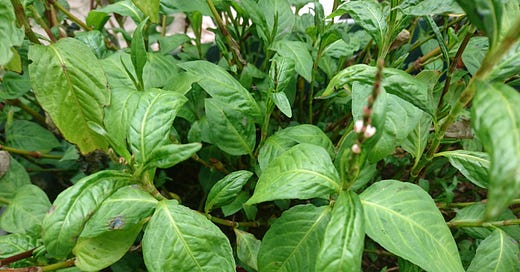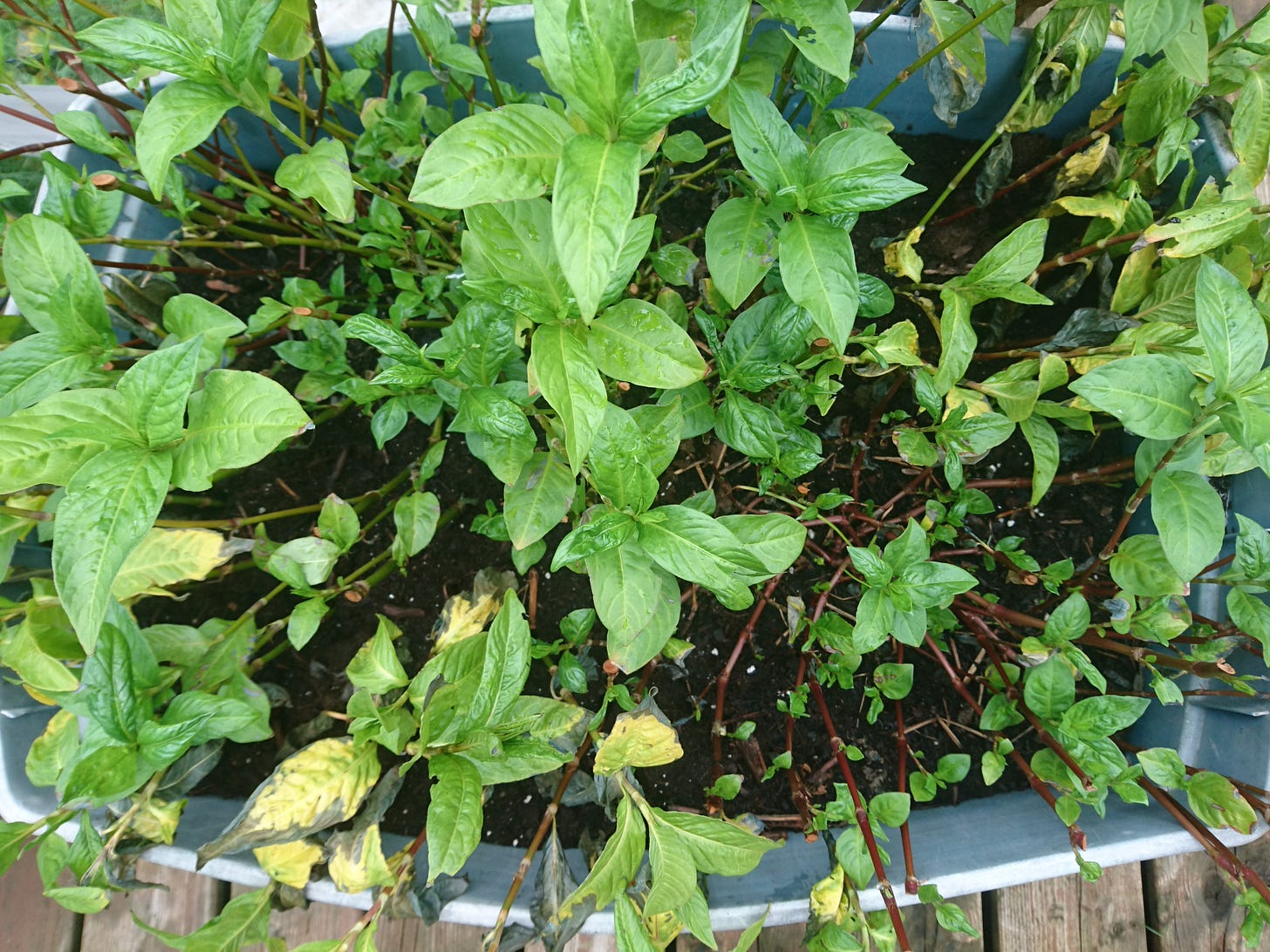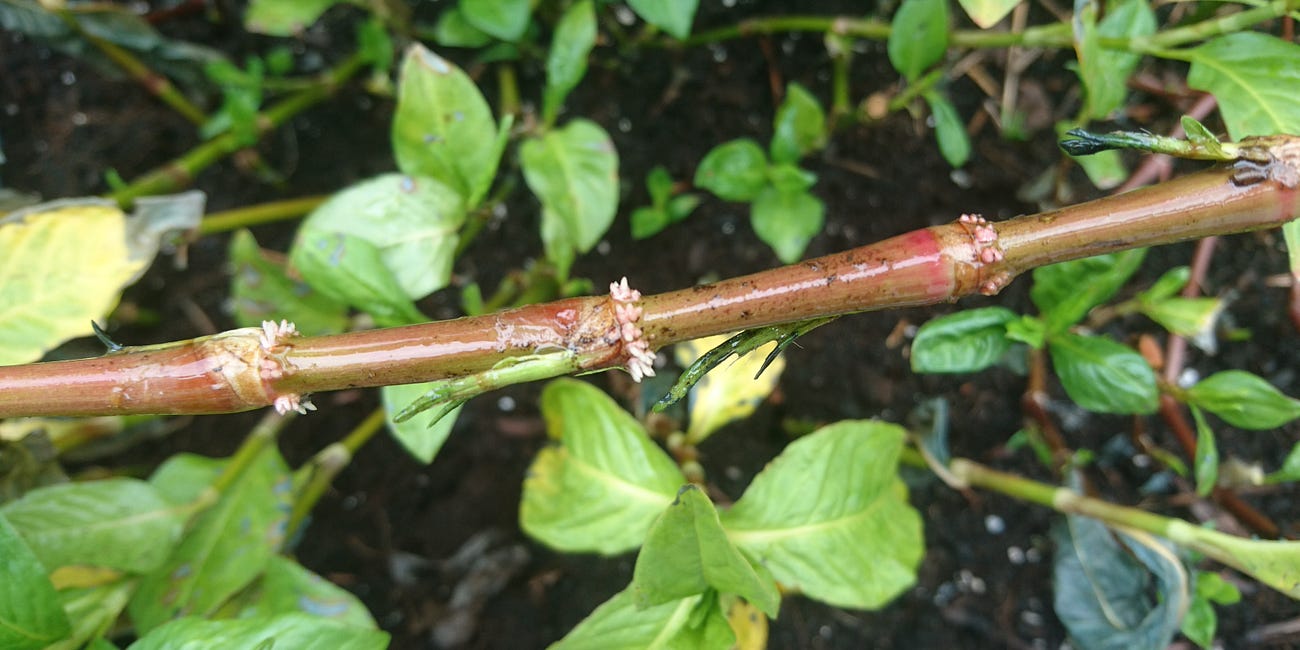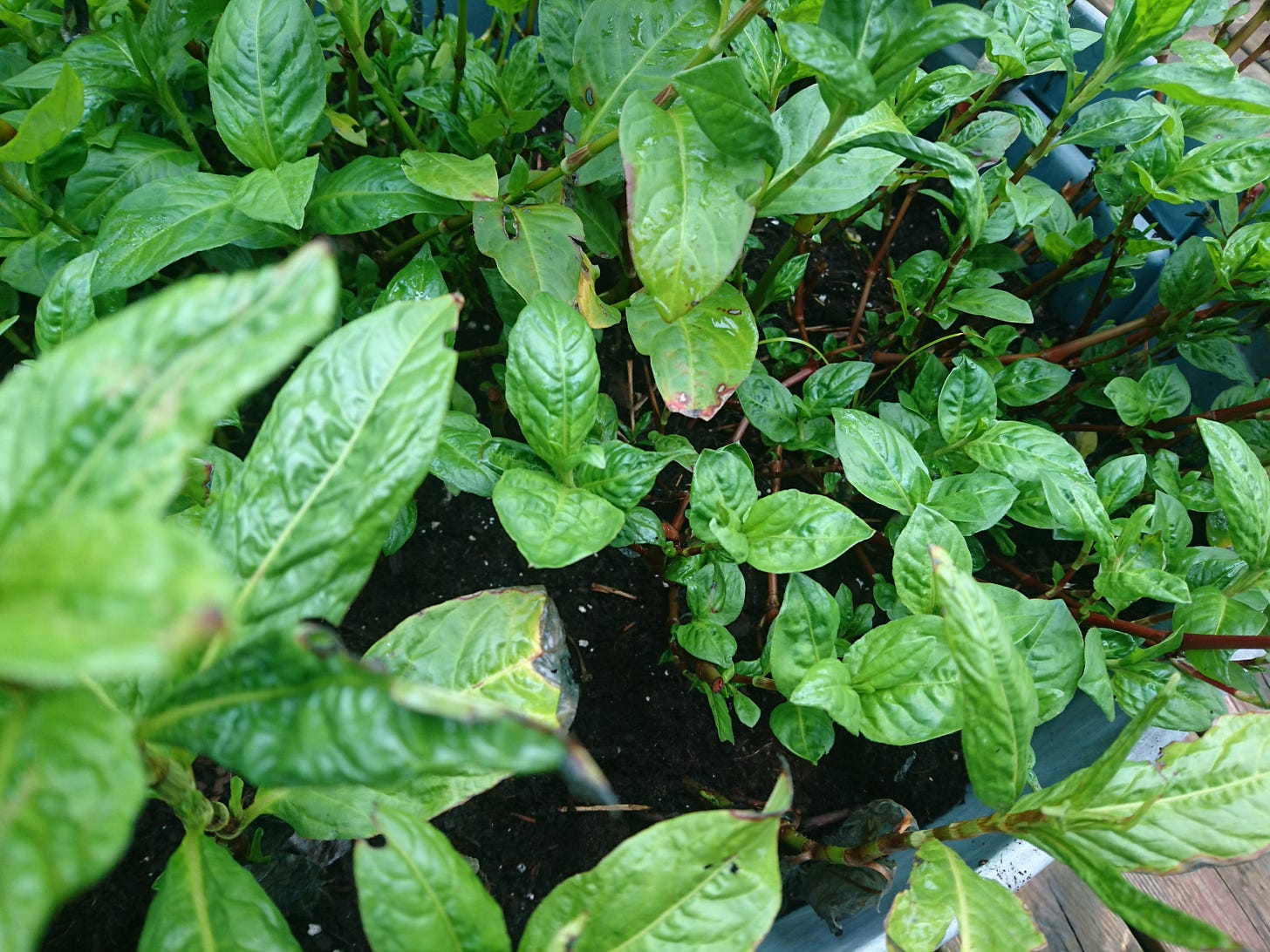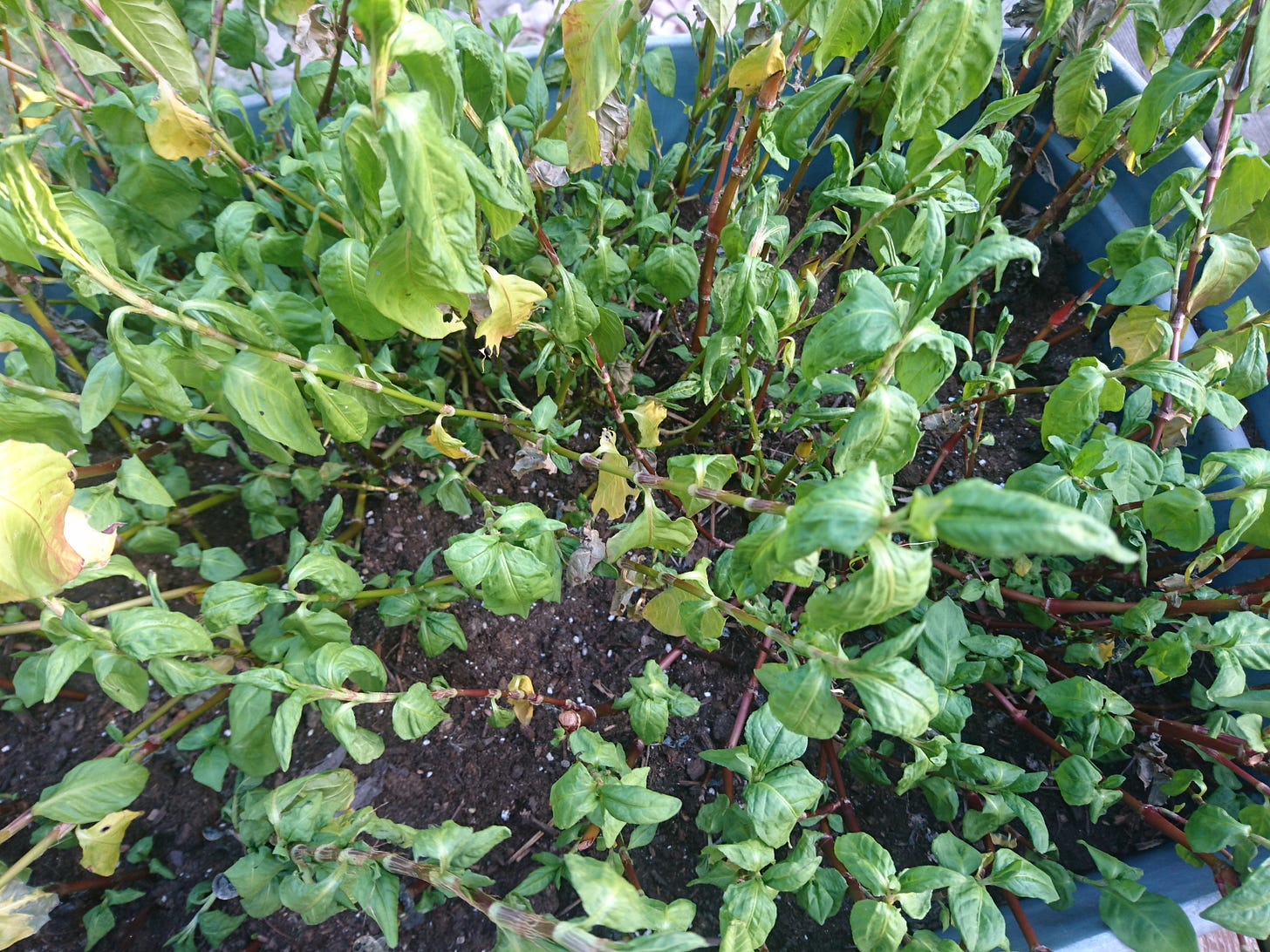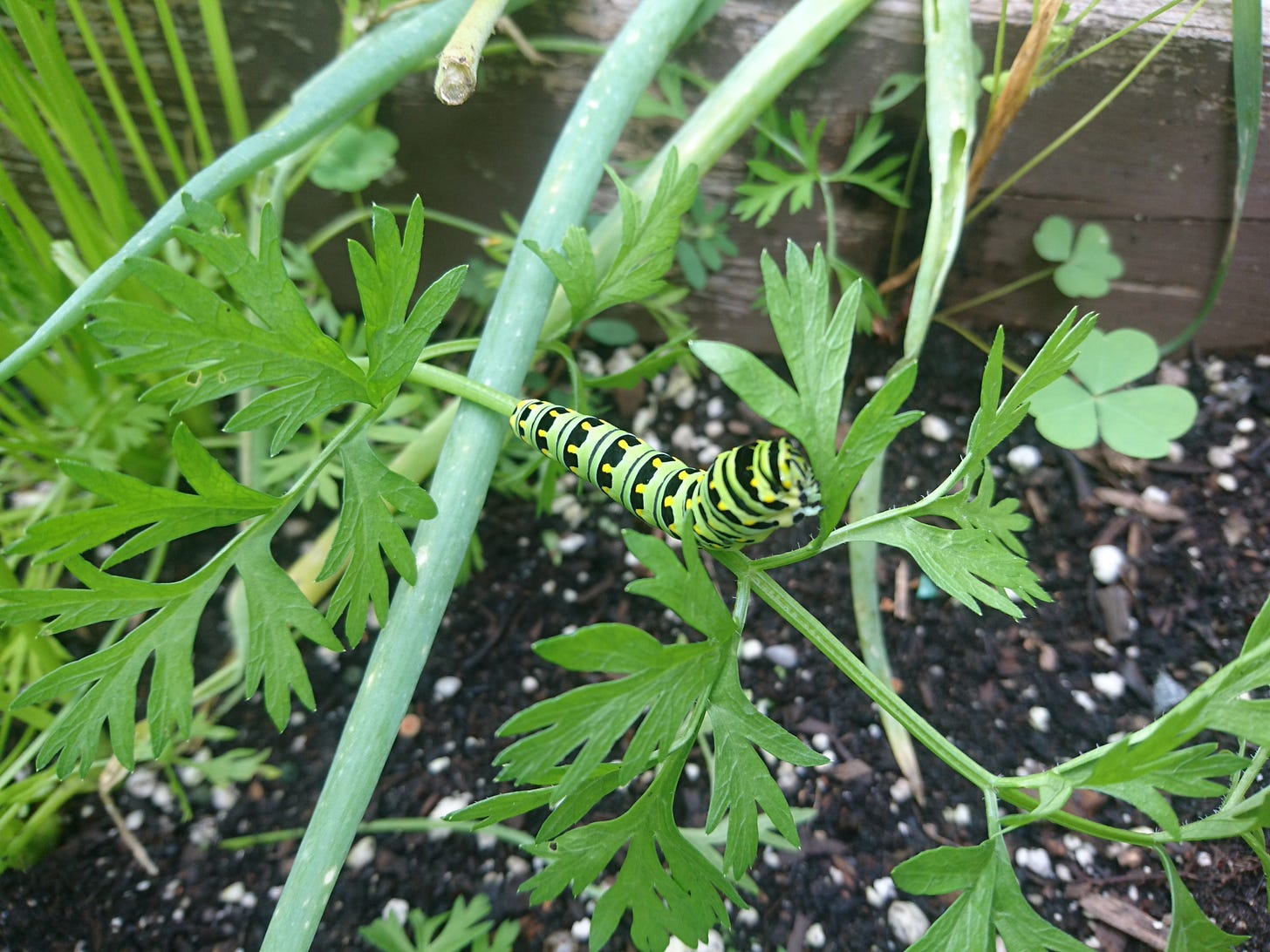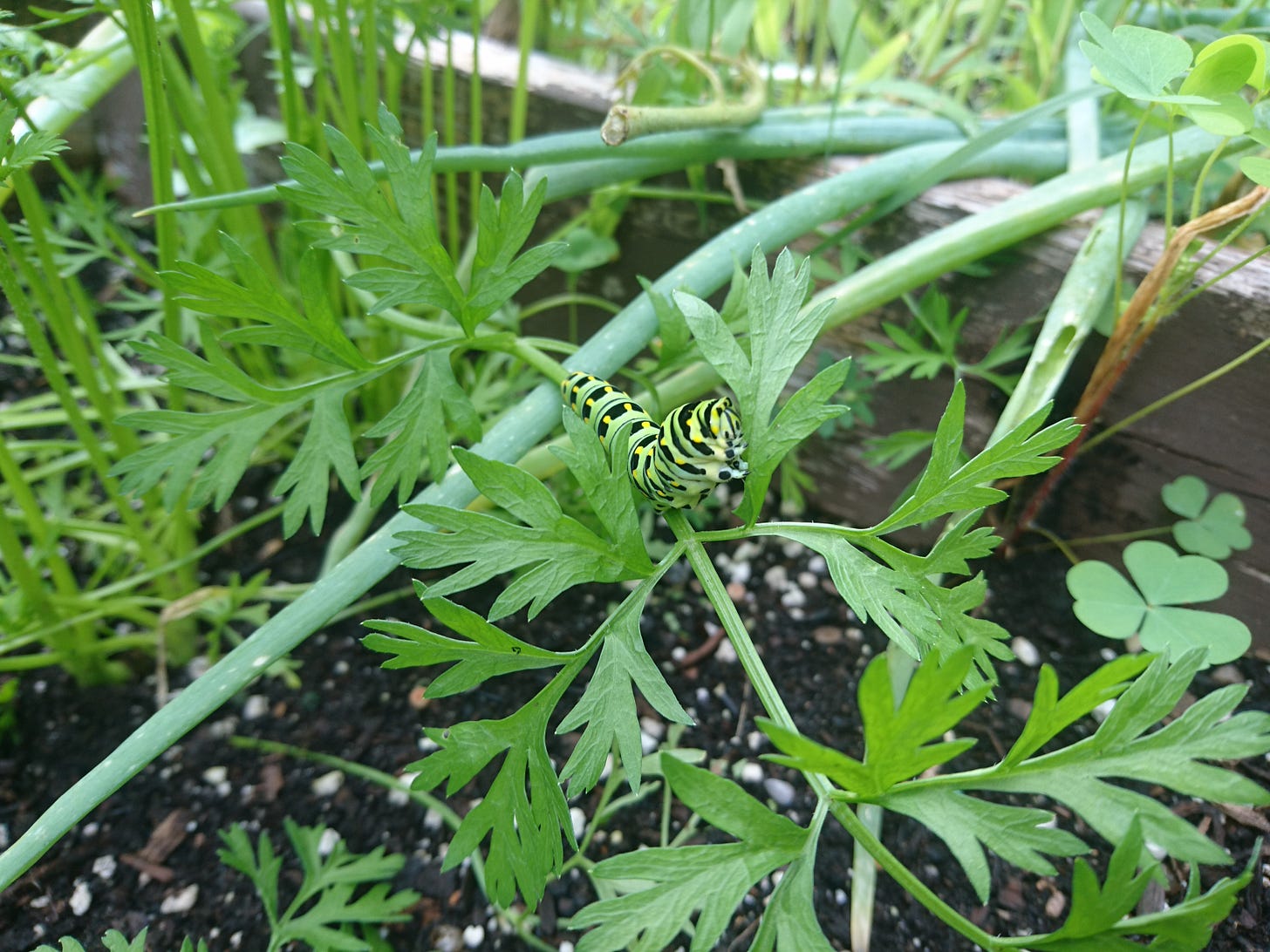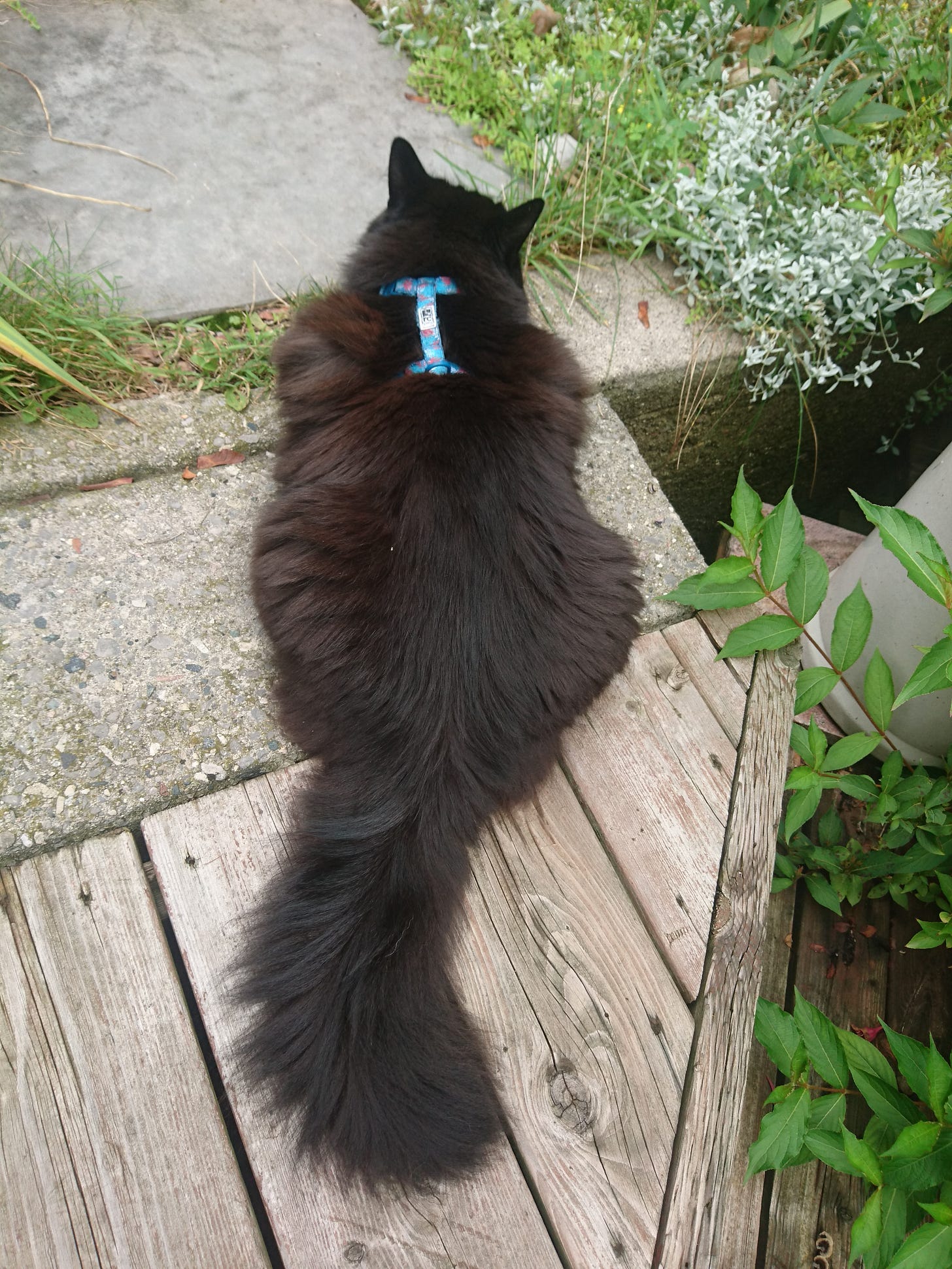Plants plants plants.
I have been observing my indigo plot over the last few days weeks. They are acting as i expect. Persecaria Tinctoria has a habit of occupying the available sunlight exposure as optimally as possible. It’s a clever strategy. The stems shoot leaves out of every node possible, and whichever leaf grows fast enough occupies more of the available sunlight. They vie and squabble for the life giving light, and those who fail have their minerals stripped, redirected to more successful leaves on the stem. The result is a thick canopy of leaves making the most of the sunlight.
The rooted plants have come a long way. They started as three seedlings that volunteered themselves in late April. Their presence is a testament to both their tenacity and my failure to harvest all of the seeds. I knew that birds and squirrels had tasted the seeds. I was concerned that seeds had been carried away to other backyards, but I did not consider that seeds had fallen back into the soil! There were other locations where seedlings volunteered. Their less than ideal locations resulted in a swift end to their attempts, which works well for me, because it shows that Persecaria Tinctoria is not likely to run rampant here.
These three seedlings were located inside of the blue plastic tote that I used last year for my indigo plants. Those plants were fussed and fawned over. My research and task tracking document is 28 pages long, and does not count the numerous web pages that I have printed to PDF. Last year, I had thirty plants arranged in three rows. Never did I imagine that the three plants would create an ample amount of foliage compared to the thirty plants in the same space!
These three little guys didn’t have much help from me. I wanted to see if they would thrive or perish on their own merit. They were not lovingly tended, or fussed over. Their soil received neither compost nor fertilizer. Occasionally I would pluck other plants from the soil, removing the clovers and grasses that wished to grow in the blue tote. I am certain that I mistakenly culled some thai basil seedlings before I knew what they looked like. With the three seedlings’ little corner free of competitors (excluding their seedling siblings) they were left to conquer the blue plastic tote. The most that I did for them was aerate the soil once, and water them during two particularly dry spells.
They flourished. I wasn’t expecting them to grow so wildly, and occupy every inch of the tote that they could get their little roots on. The places where they did not have roots in the soil became shaded by their foliage. Now that the whole tote was occupied, their was an internal conflict. With no more sunlight to seek, leaves started dying off. Others were too old to remain healthy, but their position at the top of the stem prevented new leaves from growing. There were too many stems occupying too little space. Even leaning out over the sides of their blue plastic tote did little to alleviate their need for light.
Herbs need to be eaten, fruits trees pruned, and grasses munched. Centuries of conditioning have resulted in a similar need in Persecaria Tinctoria. There is a harvest in mid to late June, and another in August just before the plants flower.
They craved the harvest, and I was happy to oblige.
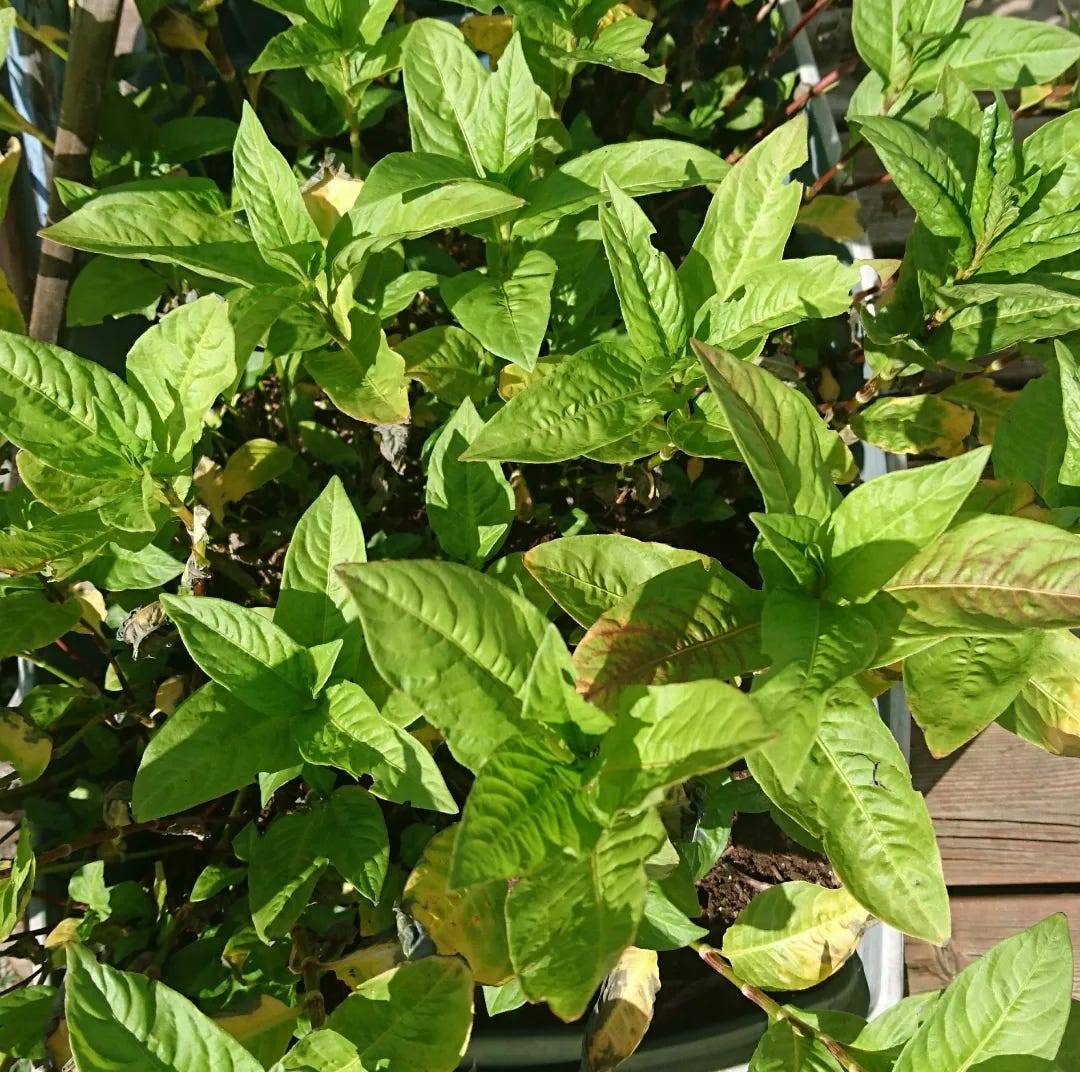
A Little Plant Panic
This week I harvested the indigo plants. When I cut my plants it is a dance. Not too high, not too low. At each node the plant can grow leaves or roots, so I choose a node that has small leaves growing, and cut just above that node. Each cut stem also needs to have enough nodes and live leaves so that it has enough energy to grow roots.
After the harvest, these three indigo plants have been much happier. The stems have unleashed a generation of new leaves. The weather was cool enough to provide optimal indican production, too, but I was neglectful in not taking advantage of that harvest. With the understory filled out the leaves began growing upwards, starting their cycle and vying for sunlight again. Except now they have been focusing their energies on creating flower stalks.
Flowering begins about two weeks before Mabon. When it is time to ‘go to seed’ Persecaria Tinctoria grows a stem covered in flowers. These tiny blooms can be pink, white, or a striped mix of the two. Bees adore these blooms almost as much as catnip and mint flowers. They dance and play along the individual blossoms, pollinating the seeds before jaunting off with their treasure of nectar. It takes about two weeks for them to grow and bloom, so Mabon is the date to search for dancing bees.
This year, I intend to put a net over the plants to prevents squirrels and birds from tasting my modest harvest of seeds. Part of me doubts that this will be successful. Squirrels are tenacious, audacious, excessively stubborn creatures. My intent is to leave the plants out in the chill air past Samhain, and harvest them after the first frost. I want the natural cycle of seasons to kill off the plants. The seeds need the chill of winter to usher the seeds into a long sleep.
Other Garden News
I made a friend last week. She is a cute little caterpillar who mysteriously appeared on my carrots.
Apparently she is a black swallow tailed butterfly. The black one that we see frequently with little yellow or blue squares on their wings. They eat carrots, dill, and other fuzzy foliage, concentrating the scent into an orange prong that they will deploy when frightened. This seemed peculiar because I do not know of any other patches of such plants nearby. I threw a bit of plastic netting over her and the carrots. Many folks suggested that I place her in an enclosure, but I don’t want to scare her terribly. Nor do I want to pluck leaves from my carrots and have her ignore them.
She seemed happy in the garden for a few days, until I found her escaping the netting. I used a pair of chopsticks to move her closer to the centre of the foliage. This might have frightened her, because when I went to check the next morning she had bugged off.
She appeared as quickly as she departed. I don’t know if she decided to go to another patch of herbs, was eaten, or safely wound her chrysalis. Good luck little bug.
